Got some sanding to do? You can find a specialty sanding tool for the job that's guaranteed to be easier than sanding by hand.
Our editors and experts handpick every product we feature. We may earn a commission from your purchases.Learn more.
Got some sanding to do? You can find a specialty sanding tool for the job that's guaranteed to be easier than sanding by hand.
Our editors and experts handpick every product we feature. We may earn a commission from your purchases.Learn more.
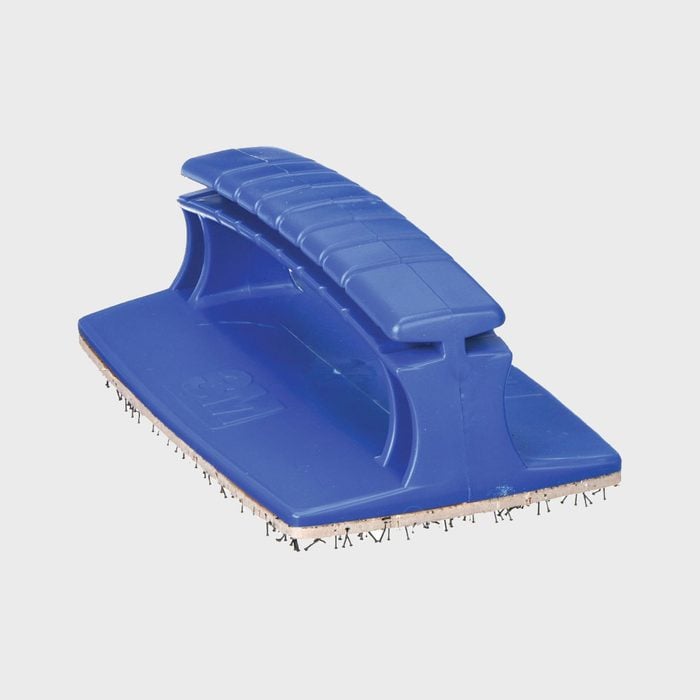 Via Grainger.com
Via Grainger.com
One step up from a folded piece of sandpaper, a sanding block distributes the force you apply over a wider area. The rigid edges of a block improve the performance of the sandpaper in corners and other tight places.
You can make a block from a scrap piece of wood, but store-bought ones like 3M’s Insta-Lok Hand Block offer two advantages. The clamp and/or grippy surface holds the paper securely, and many come with easy-to-grip handles.
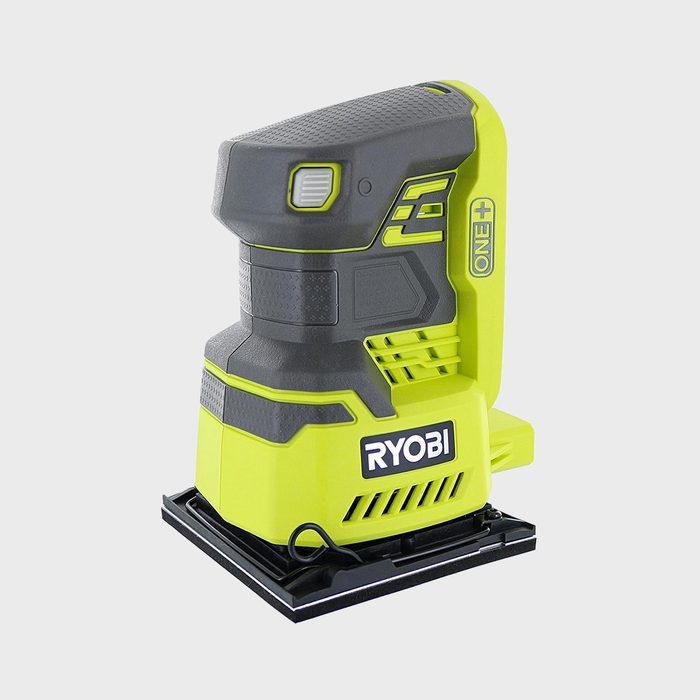 Via Amazon.com
Via Amazon.com
If you have only one sander in your tool collection, it’s probably a palm or orbital sander. The square, cushioned pad rotates in small circles to wear away the surface, and the tool is small enough to operate with one hand.
With improved battery technology, cordless palm sanders like Ryobi’s One+ let you take it on ladders and other places where pesky cords just get in the way. Look for one that, like the Ryobi, holds the paper with a locking clamp. Spring-loaded jaws don’t work as well as a clamp.
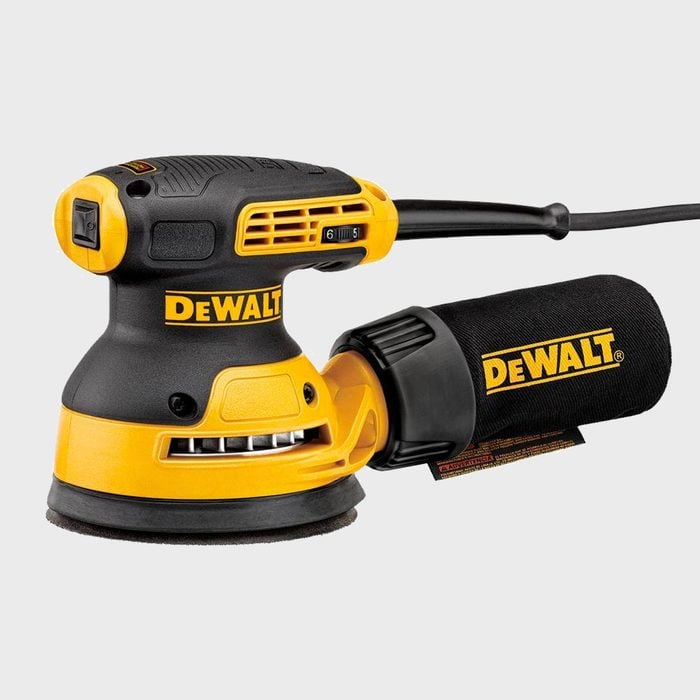 Via Homedepot.com
Via Homedepot.com
A random orbital sander and an orbital sander are not the same thing. A random orbital sander has a round pad that spins as it vibrates, which helps eliminate the squiggle marks left by the vibrating sandpaper.
This is a heavier-duty tool that works best with a steady supply of power from a cord. A good example: This sander from DeWalt. Because it works faster and cleaner than a palm sander, it’s better for smooth, flat surfaces like tabletops and stair treads. The adhesive pad accepts only pre-cut round sanding sheets, purchased separately.
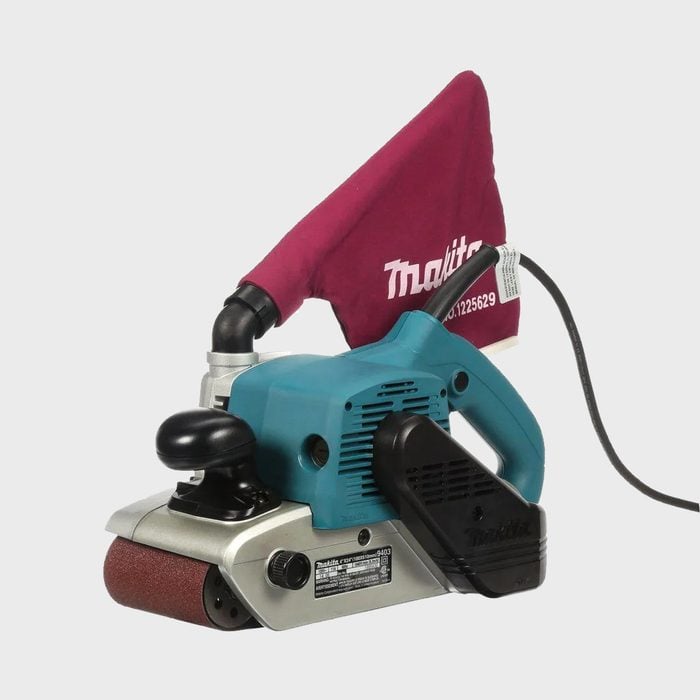 Via Homedepot.com
Via Homedepot.com
When you need to wear down a surface quickly, reach for a belt sander. A handheld model like the one from Makita, when fitted with an 80-grit sanding belt, can wear 1/16-in. from softwood in less than a minute. Hardwood takes a little longer.
Belt sanders leave behind a rough surface with linear scratches. So if you need a smooth surface, you usually have to follow up with a palm or random orbital sander.
You can also purchase a stationary belt sander for the shop. It’s great for shaping wood and wearing down fat pieces to fit in narrower places.
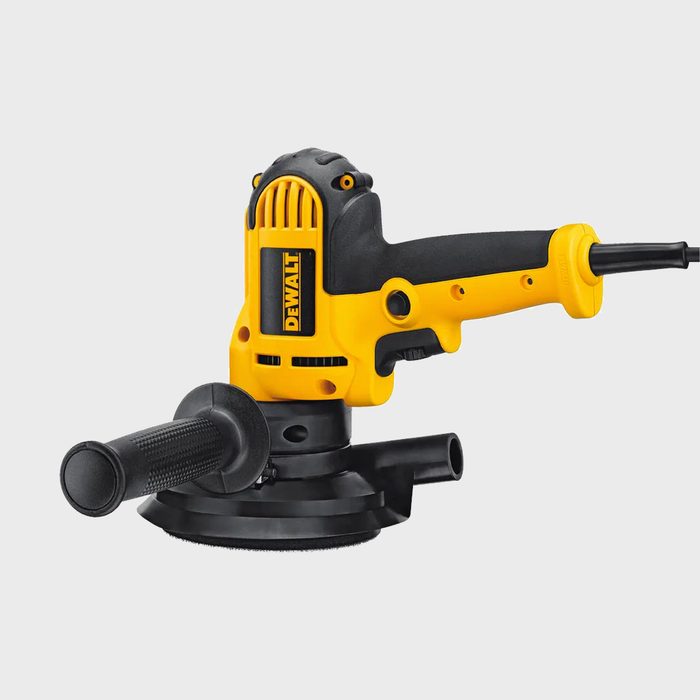 Via Homedepot.com
Via Homedepot.com
Like a belt sander, a disk sander like this model from DeWalt wears stock down quickly, but the shape of the tool lets you get it in places a belt sander can’t fit. If you need to sand paint off the side of a piece of wood attached to the floor, a disk sander is better for the job.
A disk sander looks like a random orbital sander, but the disk rotates at high speeds and doesn’t vibrate. Like belt sanders, disk sanders come in stationary models for shop work. This tabletop model from Ryobi combines both types of sanders into one handy tool.
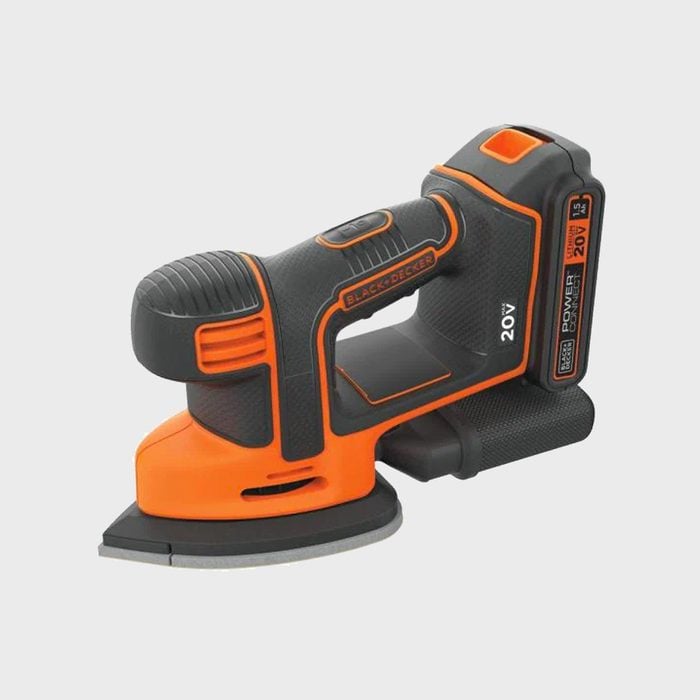 Via Homedepot.com
Via Homedepot.com
DIYers often keep a palm sander as their only sanding tool, but you should have a detail sander instead. It does everything a palm sander can do and more.
A detail sander can sand flat surfaces as well as a palm sander. With its triangular base it can reach into tight places, making it perfect for cleaning up trim, molding and turned furniture legs. The only downside: You have to purchase pre-cut sanding sheets, which are more expensive than sandpaper. (Be sure to get the right size).
This corded detail sander from Black+Decker is as good as any. If you prefer a cordless version, Black+Decker makes one of those, too.
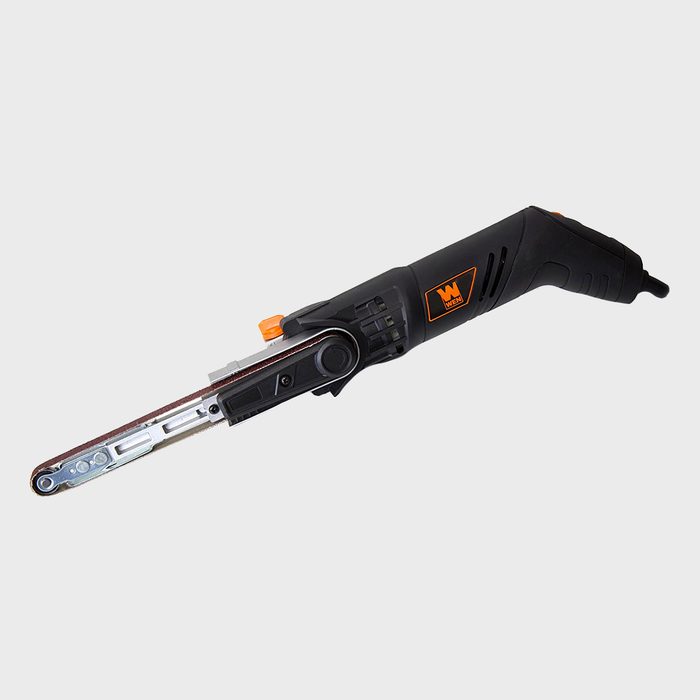 Via Amazon.com
Via Amazon.com
If you’re concentrating on detail work — perhaps you’re restoring an antique credenza — you might consider a file sander. It’s built like a belt sander, but it’s tiny and can reach deep into places a detail sander won’t fit.
The WEN Variable Speed Detailing File Sander operates at high and low speeds, so you can sand off finish without changing the shape of the wood or penetrating veneers.
By the way: You can DIY a tiny orbital detail sander by shaving the brushes off a battery-powered toothbrush and gluing on a piece of plastic. Cut out a piece of sandpaper to fit and spray non-permanent adhesive on the back before sticking it to the plastic. When the paper wears out, just pull it off and put on a fresh piece.
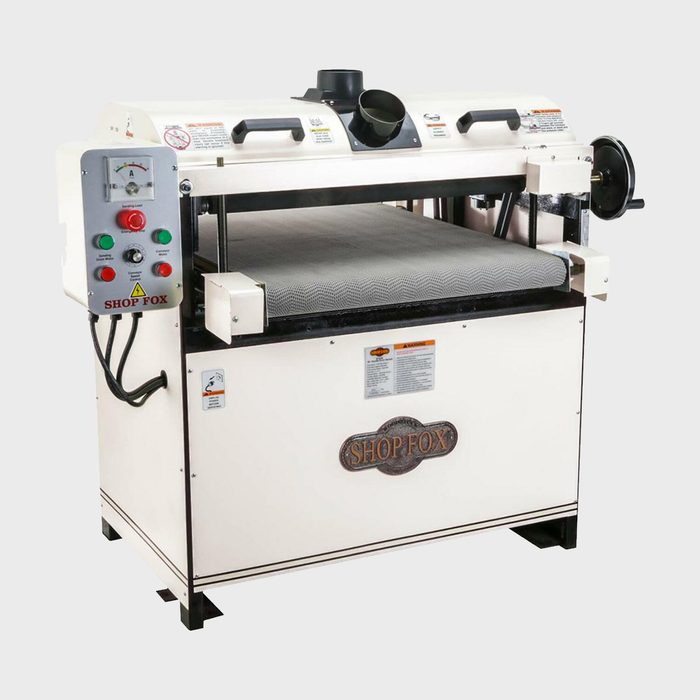 Via Jbtools.com
Via Jbtools.com
Cover a cylindrical piece of plastic or metal with sandpaper and you’ve got a drum sander. You can find tiny ones that fit into a rotary tool for detail work, shop models for flattening and dimensioning wood and extremely large and heavy ones for sanding floors.
A flooring drum sander has only one purpose — to sand floors — so it isn’t a tool you’ll keep around the house. If you need one, rent it.
Look for one like the Galaxy Omega 8, which doubles as a belt sander. It has a clutch that allows you raise and lower the drum with a handle rather than by tilting the entire machine. Better control means fewer ripples on your sanded floor.
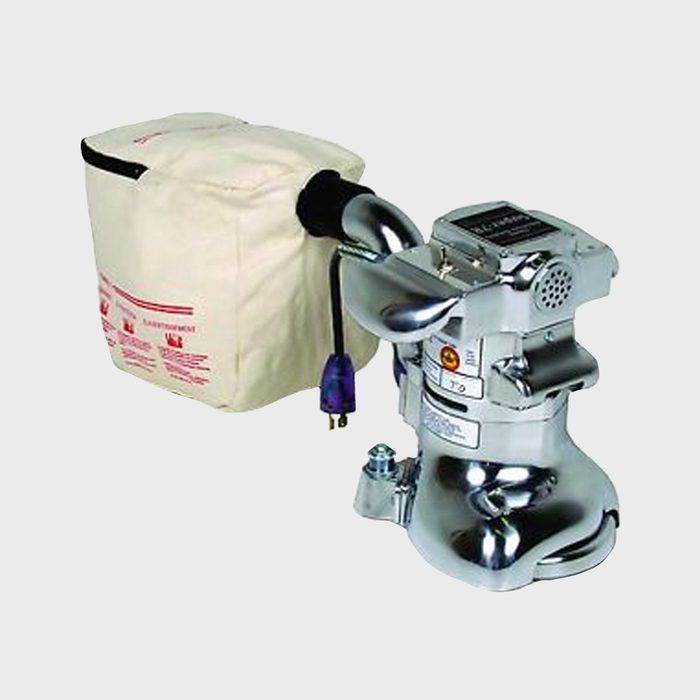 via ampro-online.com
via ampro-online.com
If you’re sanding a floor with a drum sander, you’ll also need an edging sander, usually called an edger. It’s a powerful disk sander mounted in a heavy housing that rolls on the floor. The disk tilts forward so only the front section touches the floor.
This tool can sand off floor finish right up to the baseboards, but it’s powerful and calls for caution. It’s critical to keep it moving. If it stays in the same place for even a few seconds, it can wear a depression in the wood that’s difficult to mask.
This is another tool that’s best to rent, and most rental outlets carry something similar to the 7R Edger from American Sanders.
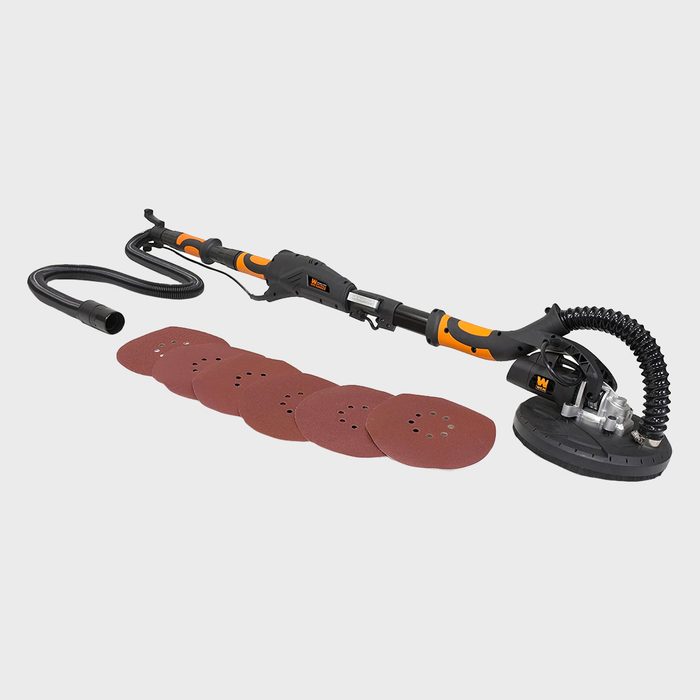 Via Amazon.com
Via Amazon.com
You could use a sanding block or a drywall hand sander to smooth drywall and get it ready for painting. But it’s a lot of work, and when you’re done you’ll be covered with dust. For medium to large remodeling projects, a corded drywall sander is a far better option.
It’s basically a random orbital sander on the end of a long pole. Good models, like the WEN Variable Speed Drywall Sander, come with a vacuum hose to keep the drywall dust out of your hair and eyes. And the long pole reduces the time you spend moving a ladder around and climbing up and down.